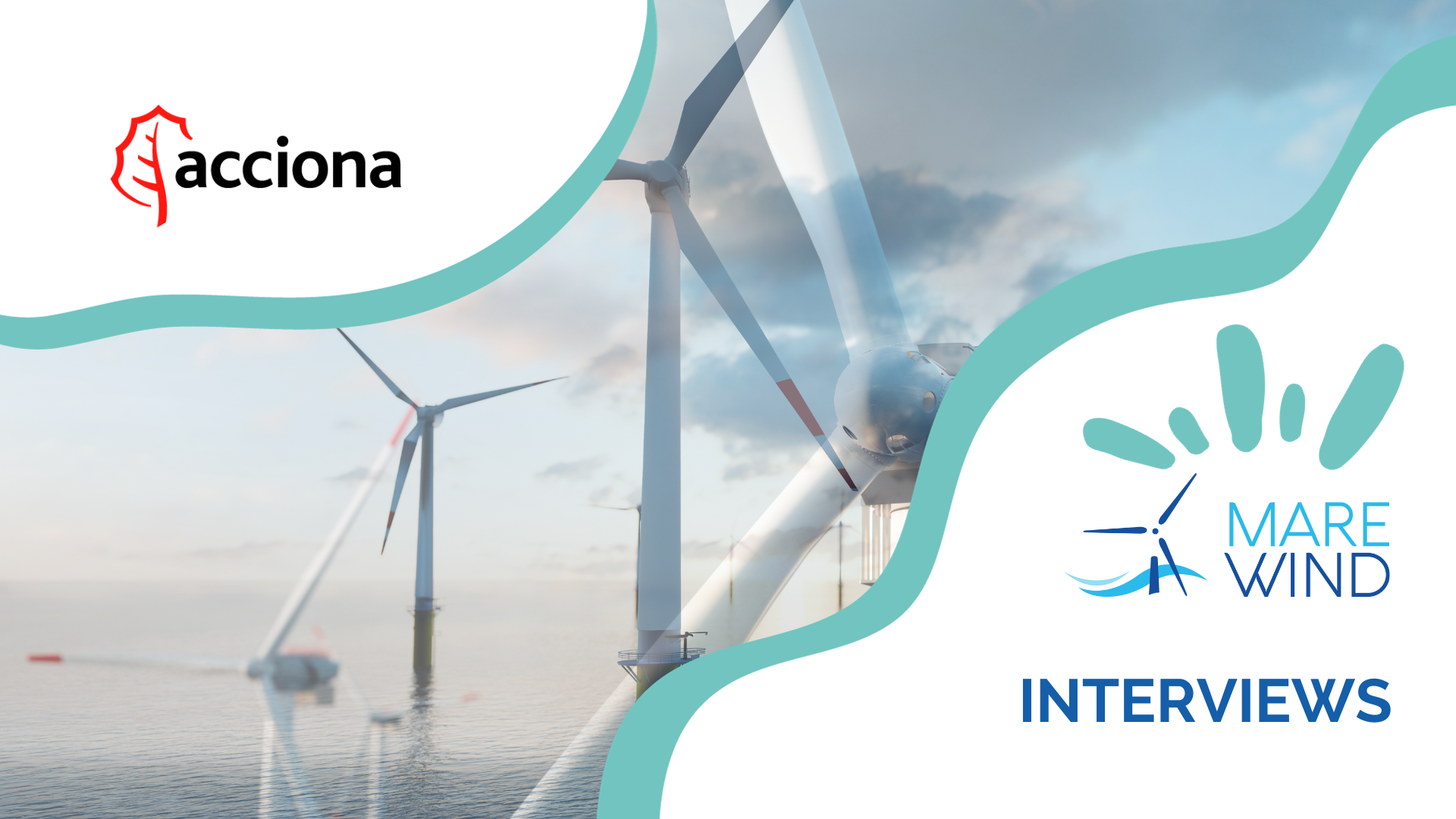ACCIONA, specialist in the development, construction and O&M of wind farms
01 February 2024
Why did you join the MAREWIND project and what’s your role?
Acciona, and in particular the Technological innovation department of Acciona Construction company, joined the project due to the exceptional opportunity for developing new and promising materials that will enhance offshore infrastructure durability, one of the Company’s markets.
Our role in the project is the development of Ultra-High Performance Concrete (UHPC) for floating slabs on offshore windmills within task 2.4, of which we were leaders. Additionally, we have also prepared different demonstrators to check both UHPC durability and the performance of optic sensors developed by CETMA embedded in UHPC floating prototype.
By the end of the project, Acciona is also organising a workshop for the project dissemination.
As specialist in the development, construction and O&M of wind farms, how is ACCIONA contributing to the European renewable energy targets?
Acciona is composed by different business such as, Construction, Engineering, Water and Energy, among others. All of them cover different sectors and provide different solutions for improving the welfare of society. ACCIONA invests in, develops and operates infrastructure assets that make our planet more sustainable.
Our Sustainability Master Plan 2025 aims to make us a recognised leader in developing basic infrastructure assets with additional value for people and the planet, in short, regenerative infrastructure. Those working guidelines are focused on reducing the impact of all business performance contributing to fulfill European renewable energy and sustainability targets.
Durability, fresh, and mechanical requirements are crucial for concrete in offshore structures. Could you explain the specific requirements and standards that UHPFRC/HPFRC concretes must meet to ensure a long service life in this context?
Concrete materials designed for offshore applications must follow the standard EN 206-1 (2021), fulfilling the minimum requirements for the exposure class XS3. The strength usually used until now in some of company’s applications is a C60 concrete.
The UHPC developed in the project will enhance concrete properties currently used concretes.
Can you describe your involvement in the synthesis of new concrete materials like UHPRC?
Acciona staff involved in the project are experts in concrete materials. So, we designed the UHPC (and HPFRC) for the beginning, with the characterisation of different raw materials to the selection of the most suitable ones to get the optimum final UHP concrete. The design was also focused to achieve more sustainable concretes compared to the actual UHPC solution. In this sense, the mix design selected has a up to 24% less cement content than a standard UHPC formulation.
Could you explain the process of preparing, developing, and testing such a prototype? What are the key performance indicators you look for during these tests?
The project designated the prototype for this materials as a floating beam. For a more interesting demonstrator it was tried to select a section of a real offshore windmill floater, but due to the complexity of the scaling to fit the prototype dimensions on the test site (EUMER) facilities, it was finally kept as a beam. Dimensions were recalculated to get a floating prototype.
Manufacturing present different challenges, being the most problematic one, the pressure that this concrete exerted on the formwork and interior reinforcement core. To prevent the problems arise in the manufacturing of the first prototype, additional fixation systems were implemented in the second demonstrator formwork. The Key performance indicator (KPI) looked during the tests are related to durability improvement of concrete materials (KPI2), reduction of operation and maintenance costs (KPI 6), reduction of the environmental impact of the material and industrial production (KPI9) and increase in competitiveness and knowledge related to KPI11.
How do you ensure that the concrete materials you work with meet or exceed the mechanical and durability requirements, considering the harsh conditions of offshore environments?
Concrete characterisation carried out during the concrete mix design at lab scale exceed the mechanical requirements required for the concrete mixes currently used in offshore applications. Durability test performed at lab scale also present an improvement compared to the standard concrete used in this environment (C60 class concrete).
With the samples placed in real environment at Gijón’s Harbour would monitor the real resistance to chloride intrusion of the developed UPH concrete mix. We are optimistic on the good durability performance of this material, thanks to the low porosity that presents, will ensure that the resistance to chloride penetration will be much higher than the current solution.
How do you see the future of the MAREWIND project?
From Acciona we think that this project has a promising future. At lab scale, materials developed present a very good performance and are optimistic to keep this behavior at real environment. Offshore windmill industry is raising and demanding more sustainable and durable materials to achieve EU emissions requirements and to reduce the maintenance and repair works due to the harsh condition related to offshore facilities. The materials developed in this project so, could be of great interest for the wind energy sector, but also for other offshore infrastructures.

